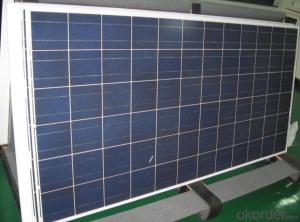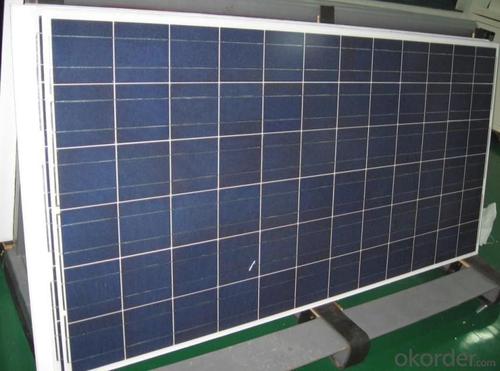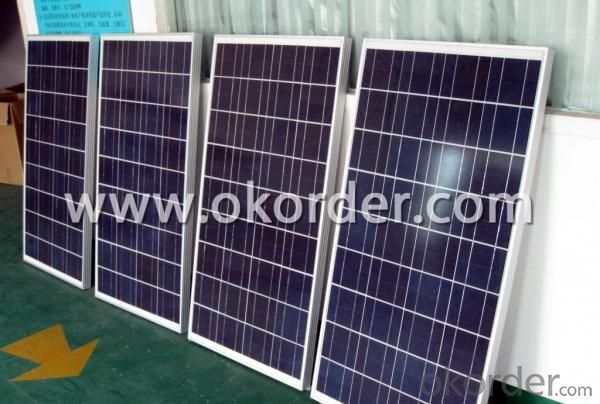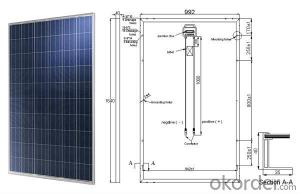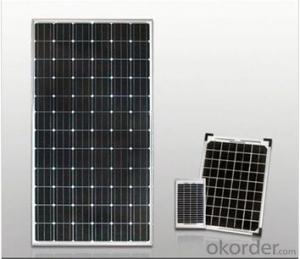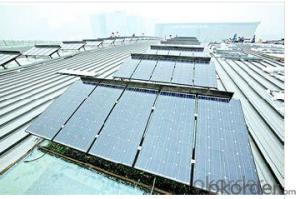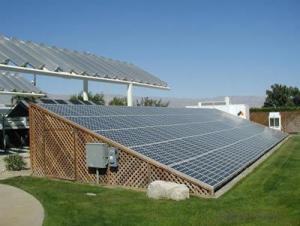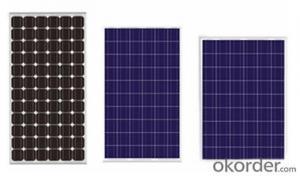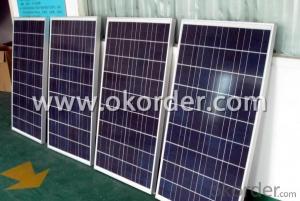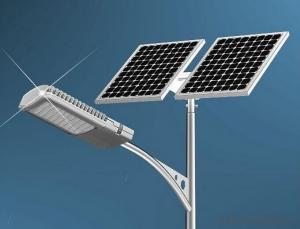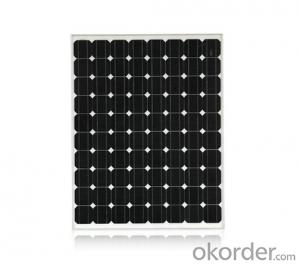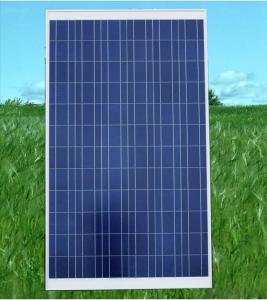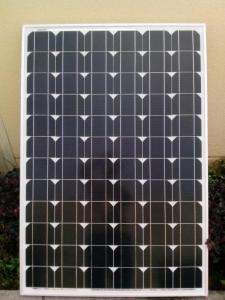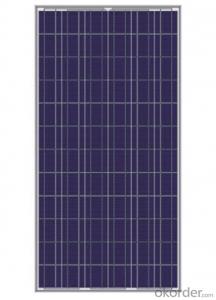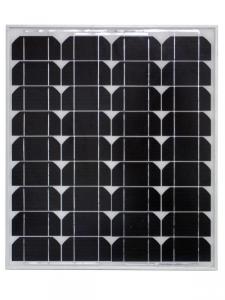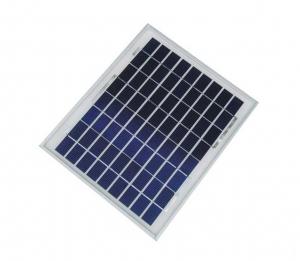Best Backpacking Solar Panels - 300w CNBM Solar Polycrystalline Series III (300w-310w)
- Loading Port:
- China main port
- Payment Terms:
- TT OR LC
- Min Order Qty:
- 10000 watt
- Supply Capability:
- 500000 watt/month
OKorder Service Pledge
OKorder Financial Service
You Might Also Like
Specification
CNBM Solar Polycrystalline Series III (300W—310W)
Characteristics
Max Power Voltage Vmp(V) | 36.6 | 36.9 | 37.2 | 37.5 | ||
Max Power Current Imp(A) | 7.66 | 7.73 | 7.8 | 7.87 | ||
Open Circuit Voltage Voc(V) | 44.2 | 44.6 | 45.1 | 45.4 | ||
Short Circuit Current Isc(A) | 8.26 | 8.32 | 8.41 | 8 | ||
Max Power Pm(W) | 280 | 285 | 290 | 295 | ||
Temperature Coefficient of Cells
NOCT | 45℃±2℃ | |
Temperature Coefficients of Isc (%/℃) | - 0.0492 | |
Temperature Coefficients of Voc (%/℃) | – 0.3374 | |
Temperature Coefficients of Pmp (%/℃) | –0.4677 | |
Mechanical Data
Dimension | 1638 x 982 x 40 mm | |
Weight | 19.5kg | |
No. of Cells and Connections | 60 (6 x 10) | |
Tolerance | 0~+5W | |
Cell Monocrystalline Cell | 156 x 156 mm | |
Packing | 700 Pcs/40ft(H) Container | |
Limits
Operating Temperature | –40 °C to +85°C | |
Storage Temperature | –40 °C to +85°C | |
Max System Voltage | 1000VDC(IEC) / 600VDC(UL) | |
IV Curve
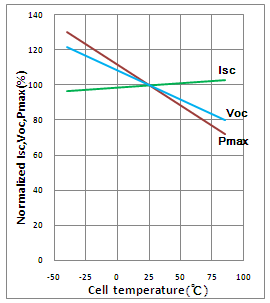
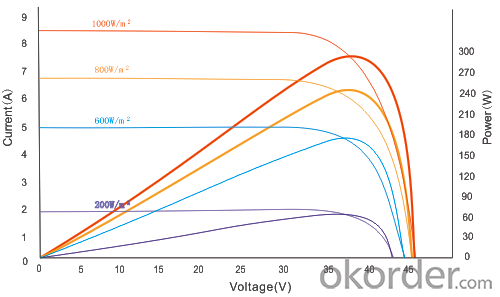
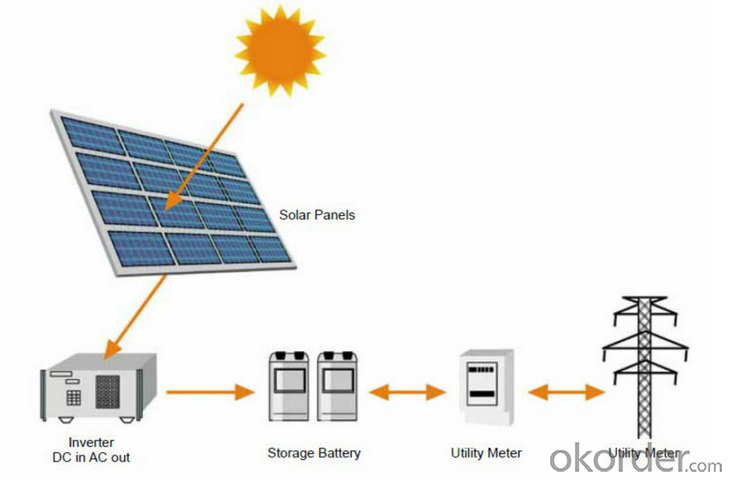
Image
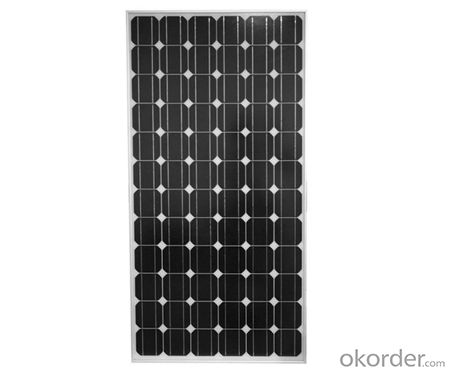

Guarantees
Products Guarantee 12 yrs free from defects in materials and workmanship
Performance Guarantee No less than 90% within 10yrs and no less than 80% within 25yrs
Certificates TUV (IEC61215&IEC61730), VDE(IEC61215&IEC61730), UL, CE
FAQ
1. Q: Do you have your own factory?
A: Yes, we have. Our factory located in Jiangsu province.
2. Q: How can I visit your factory?
A: Before you take off from your country, please let us know. We will show you the way, or arrange time to pick you up if possible.
3. Q: Do you provide free sample?
A: Usually we do not offer free sample
4. Q: Could you print our company LOGO on the nameplate and package?
A: Yes, we can do that.
- Q: Are there any disadvantages to using solar panels?
- Yes, there are a few disadvantages to using solar panels. Firstly, the initial installation cost of solar panels can be quite high, which may deter some people from adopting this technology. Additionally, solar panels require a significant amount of space for installation, making them impractical for individuals with limited rooftop or land availability. Furthermore, solar panels are dependent on sunlight, so their efficiency can be affected by factors such as weather conditions and geographical location. Finally, the production process of solar panels involves the use of certain chemicals and materials that can have negative environmental impacts if not properly managed.
- Q: in a solar panel, i know that the electrons are knocked loose and used as energy, what happens to the protons?
- silicon based photovoltaic cells used some boron as dopant. i dont understand if that helps supress proton pastime, the way they be conscious boron on supressing run away nuclear reaction.... im clueless as you
- Q: Can solar panels be used for powering remote monitoring systems?
- Yes, solar panels can be used to power remote monitoring systems. Solar panels generate electricity from sunlight and can charge batteries or directly power devices. This renewable energy source is ideal for remote locations where access to the electrical grid is limited or unavailable. Solar panels can provide a reliable and sustainable power solution for remote monitoring systems, ensuring continuous operation without the need for frequent battery replacement or reliance on fossil fuels.
- Q: Can solar panels be integrated into building materials?
- Yes, solar panels can be integrated into building materials. This integration is known as Building Integrated Photovoltaics (BIPV), where solar panels are designed to blend seamlessly into the architecture of a building, such as being incorporated into windows, roofs, or facades. BIPV offers a dual purpose of generating renewable energy while serving as a functional building material.
- Q: Can solar panels be used in areas with high levels of noise pollution?
- Yes, solar panels can be used in areas with high levels of noise pollution. Noise pollution does not affect the functionality or performance of solar panels. However, it is important to note that noise pollution does not directly impact the efficiency or effectiveness of solar energy generation from the panels.
- Q: Can solar panels be used in areas with high levels of air pollution?
- Yes, solar panels can be used in areas with high levels of air pollution. While air pollution can reduce the efficiency of solar panels to some extent, they can still generate electricity even in polluted environments. However, regular cleaning and maintenance may be required to ensure optimal performance and to prevent the buildup of pollutants on the panels' surface.
- Q: Can solar panels be installed on art installations or sculptures?
- Yes, solar panels can be installed on art installations or sculptures. This allows them to generate electricity from sunlight, effectively integrating renewable energy into artistic designs.
- Q: Can solar panels be used in areas with high levels of drought?
- Yes, solar panels can be used in areas with high levels of drought. Solar panels do not require water to generate electricity, as they rely on sunlight to produce energy. Therefore, they can be effectively utilized in regions experiencing drought conditions without any significant impact on their performance or efficiency.
- Q: Can solar panels be installed on a theater or entertainment venue?
- Yes, solar panels can be installed on a theater or entertainment venue. Solar panels can be mounted on the roof or other suitable areas of the building to harness solar energy and generate electricity. This renewable energy source can help reduce energy costs and carbon footprint for the venue.
- Q: planning to get one, for a store/house, we use alot of electricity at least 500-3000 dollars a month. how much money would this save us? how big would we have to get the solar panel?[aproximately]
- Consider installing building energy measurement first, which cost less than $200. Work out what is using the energy and if there are more efficient options. Consider co-generation which uses gas for an energy input and electricity generation and heat as an output. Use the Solar Energy Calculator to work out how much solar panel area is needed to generate the remaining power needed in you are of the world.
Send your message to us
Best Backpacking Solar Panels - 300w CNBM Solar Polycrystalline Series III (300w-310w)
- Loading Port:
- China main port
- Payment Terms:
- TT OR LC
- Min Order Qty:
- 10000 watt
- Supply Capability:
- 500000 watt/month
OKorder Service Pledge
OKorder Financial Service
Similar products
Hot products
Hot Searches
Related keywords
